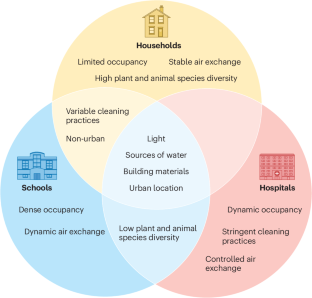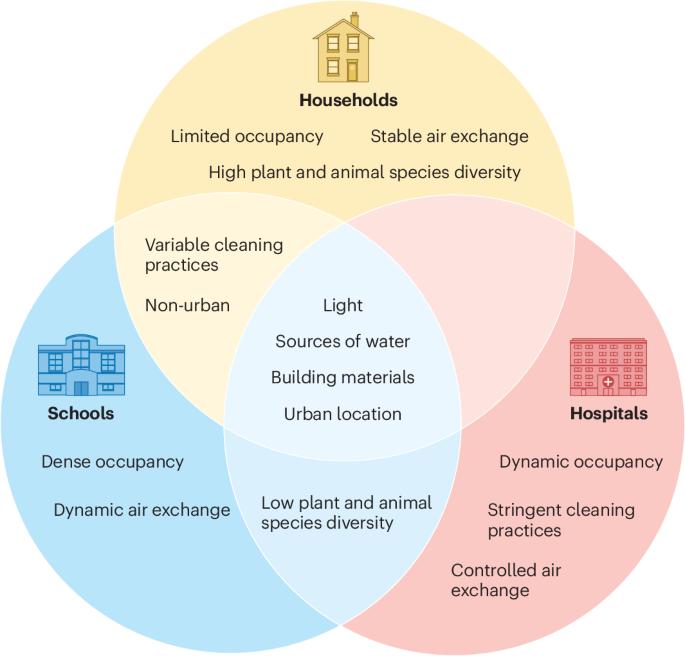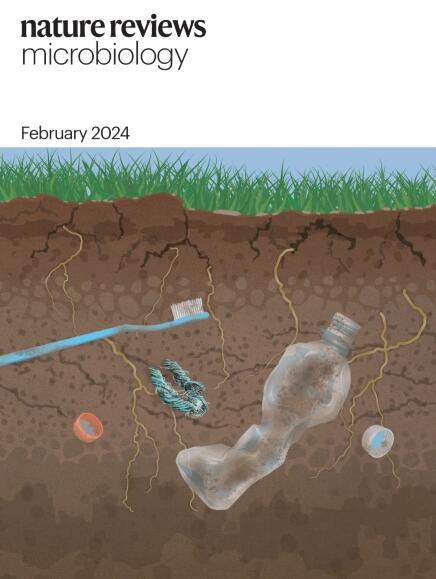室内微生物群与人类健康。
IF 103.3
1区 生物学
Q1 MICROBIOLOGY
引用次数: 0
摘要
室内环境是人类的栖息地,充满了各种微生物的贮藏库和栖息地。微生物随人类和非人类宿主进入室内空间,也可通过与室外来源(如通风和管道)的交换进入室内空间。进入室内后,许多微生物无法存活,尤其是在干燥贫瘠的表面。即使微生物数量减少,也会对居住者的健康产生重要影响。随着城市化进程的加快,探索室内环境与人类微生物组和健康之间的交叉点变得越来越重要。室内微生物组是一个由微生物组成的复杂生态系统,受人类活动和环境因素的影响,在调节传染病和促进免疫系统健康发展方面发挥着关键作用。微生物组研究的最新进展揭示了这一独特的生态系统,凸显了采用创新方法创造促进健康的生活空间的必要性。在这篇综述中,我们将探讨建筑环境--人类生活的主要场所--的微生物生态学及其对免疫、内分泌和神经系统健康的影响。我们进一步提出了利用室内微生物组改善健康状况的策略。本文章由计算机程序翻译,如有差异,请以英文原文为准。


The indoors microbiome and human health
Indoor environments serve as habitat for humans and are replete with various reservoirs and niches for microorganisms. Microorganisms enter indoor spaces with their human and non-human hosts, as well as via exchange with outdoor sources, such as ventilation and plumbing. Once inside, many microorganisms do not survive, especially on dry, barren surfaces. Even reduced, this microbial biomass has critical implications for the health of human occupants. As urbanization escalates, exploring the intersection of the indoor environment with the human microbiome and health is increasingly vital. The indoor microbiome, a complex ecosystem of microorganisms influenced by human activities and environmental factors, plays a pivotal role in modulating infectious diseases and fostering healthy immune development. Recent advancements in microbiome research shed light on this unique ecological system, highlighting the need for innovative approaches in creating health-promoting living spaces. In this Review, we explore the microbial ecology of built environments — places where humans spend most of their lives — and its implications for immune, endocrine and neurological health. We further propose strategies to harness the indoor microbiome for better health outcomes. In this Review, Gilbert and Hartmann examine the microbial ecology of indoor spaces, the factors that influence the microbiome of the built environment, and their influence on human health.
求助全文
通过发布文献求助,成功后即可免费获取论文全文。
去求助
来源期刊

Nature Reviews Microbiology
生物-微生物学
CiteScore
74.00
自引率
0.50%
发文量
149
审稿时长
6-12 weeks
期刊介绍:
At Nature Reviews Microbiology, our goal is to become the leading source of reviews and commentaries for the scientific community we cater to. We are dedicated to publishing articles that are not only authoritative but also easily accessible, supplementing them with clear and concise figures, tables, and other visual aids. Our objective is to offer an unparalleled service to authors, referees, and readers, and we continuously strive to maximize the usefulness and impact of each article we publish. With a focus on Reviews, Perspectives, and Comments spanning the entire field of microbiology, our wide scope ensures that the work we feature reaches the widest possible audience.
 求助内容:
求助内容: 应助结果提醒方式:
应助结果提醒方式:


